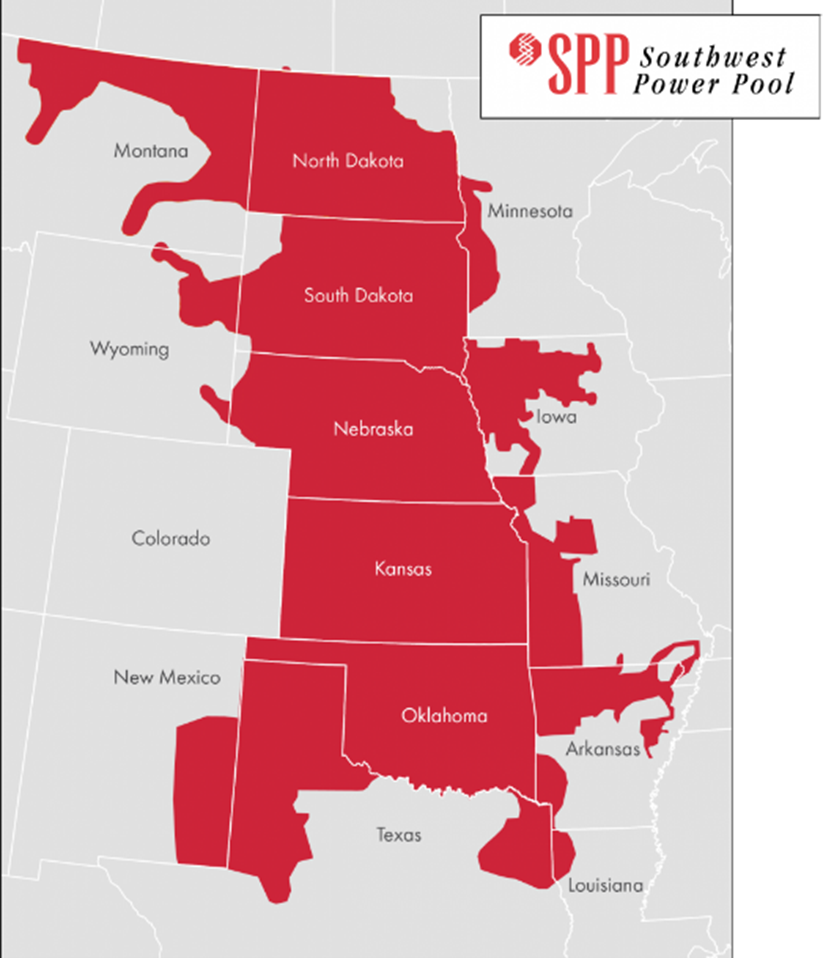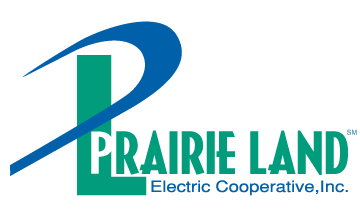Prairie Land Electric has been notified that the Southwest Power Pool (SPP), which manages energy delivery in the region, including in Kansas, has issued an Energy Emergency Alert as electric grid conditions tighten further due to the persistent and extreme cold weather. These conditions have led to electric use in SPP’s 14-state region to at times exceed available generation capacity.
Electric consumers are asked to conserve energy and, depending on the severity of the emergency, the SPP could direct its member utilities, including our wholesale power provider, Sunflower Electric, to be prepared to implement controlled interruptions of service if necessary. Controlled service interruptions are a last resort, and a step that is only taken when necessary to safeguard the continued reliability of the regional grid.
Our most current information will be shared on facebook at https://www.facebook.com/PLECOOP/.
Get the most recent information from our power provider at https://www.sunflower.net/statements/.
Monitor current grid conditions on the SPP website at https://spp.org/markets-operations/current-grid-conditions/.

Extreme cold weather and natural gas supply issues have created energy deficiencies in the Southwest Power Pool’s (SPP) region, leading the SPP to declare formal alerts associated with low generating capacity for the entire SPP footprint throughout the next week.
The Southwest Power Pool (SPP) is the regional transmission organization that oversees the electric grid and the dispatching of electric generation sources based on system constraints and availability. SPP works with generation and transmission utilities across 14 states like Prairie Land Electric’s wholesale power supplier, Sunflower Electric, to ensure reliable supplies of power, adequate transmission infrastructure and competitive wholesale electricity prices.
A responsibility of SPP is to declare and communicate the existence of any emergencies related to capacity and/or energy emergencies within the SPP area as necessary to manage, alleviate or end an energy emergency. This is done by issuing formal alerts based on SPP Energy Emergency Alert Level system.
-
Energy Emergency Alert Level 1 (EEA1) - signals that SPP foresees or is experiencing conditions where all available resources are committed to meet firm load obligations and that we may be unable to sustain its required contingency reserves.
-
The SPP issued an EE1 on Sunday, Feb. 14. Typically, an EE1 does not elicit an appeal for energy conservation, but the weather forecast led SPP to preemptively ask electric utilities to issue appeals for energy conservation for the next several days with the goal of averting planned electric interruptions in the upcoming days.
-
-
Energy Emergency Alert Level 2 (EEA2) - An EEA2 signals that SPP is no longer capable of providing its expected energy requirements and is now energy deficient. EEA2 requires the public appeal for energy conservation efforts.
-
SPP declared an EEA2 beginning at 7:22 a.m., central time Monday, Feb. 15. SPP issued a public appeal for energy conservation. This request for energy conservation will remain in effect until further notice to mitigate the risk of more widespread and longer-lasting outages.
-
-
Energy Emergency Alert Level 3 (EEA3) - An EEA3 is triggered if SPP has to utilize operating reserves below the required minimum or ask our members to implement controlled service interruptions (rolling blackouts).
-
SPP declared an EEA3 on Monday morning, Feb. 15. As soon as Prairie Land Electric knows more about any potential controlled interruptions in power, we will let members know.
-
Why is this happening and what caused the issuance of an energy emergency?
High market prices and the declaration of energy emergency alerts are due to a number of factors resulting from widespread, long-lasting and extreme cold weather. These factors include, but are not limited to, high electricity use across the entire SPP system, inadequate supply and high prices of natural gas, and low supply of wind generation and wind-forecast uncertainty.
When conditions exist that could lead to an energy deficiency, SPP coordinates with its load-serving utilities to issue a public appeal for energy conservation. The goal of this action is to reduce the overall system load and keep it below region-wide total generating capacity.
When a region becomes energy deficient, as it did Monday morning, the SPP declares an EEA3 and directs utilities to curtail energy use to bring load back within generating capacity limits. Should this occur, utilities will responsibly implement temporary interruptions of service (rolling blackouts) to prevent worsening system conditions that could impact a broader area or have longer-lasting effects.
How will this affect electric bills?
There is no doubt this extreme weather event and subsequent generation fuel shortage will affect the wholesale cost of power, but right now there are too many variables impacting the cost of generation to accurately predict how it will affect consumer electric bills until Prairie Land Electric receives the whole power bill at the end of the month.
It is important to note that the wholesale cost of power is a direct passthrough from our power supplier, therefore Prairie Land Electric is not making a profit or any additional money on the increased price of fuel and generation. Prairie Land Electric’s fixed costs are covered in the service access charge, which is reflective of the investment in the poles, wires, transformers and other equipment it takes to provide you with electric service. It also supports fleet, facility and member service functions, such as line maintenance, substation upgrades, property taxes, right-of-way clearing, and general administrative responsibilities, and is similar to a customer charge other utilities use, and the cost to generate power.
How can I help conserve energy?
Simple, effective ways for end-use consumers to meaningfully conserve energy include adjusting thermostats to cooler temperatures; scheduling appliances like dishwashers and washing machines to run during off-peak times or delaying cycles altogether; and keeping doors, windows and blinds shut to retain heat in their houses. Other energy efficiency steps include:
-
Postpone using major electric appliances such as stoves, dishwashers, and clothes dryers until the energy emergency is over.
-
Turn off non-essential electric appliances and equipment (radios, coffee pots, media centers, etc.).
-
Turn off power strips if not in use.
-
Actively turn off computers and monitors not in use (The "sleep" mode is good, but the "off" mode is better.). If possible, use your laptop computer as it uses much less electricity than your desktop computer.
-
Turn off lights wherever possible (don’t forget outside and decorative lighting).
-
Adjust your thermostat. Reduce unnecessary use of all air conditioning/heating units.
-
If you have an electric range, plan meals that require a minimum of cooking.
-
Open shades and blinds during the day and close shades and blinds at night to save energy.
-
Rock your winter wardrobe indoors.
-
Avoid using your exhaust fans.
-
If you have a fireplace, keep the damper closed when it is not in use.
